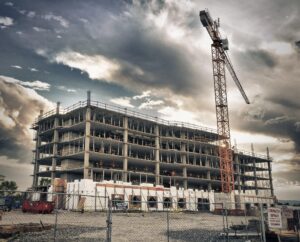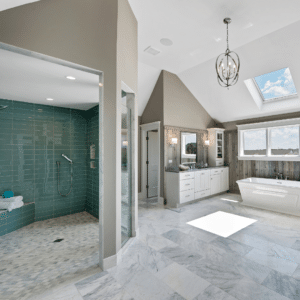Maximizing your project’s success begins with creative design and early architectural planning to maximize ROI. This approach ensures not only aesthetic appeal but also functional efficiency and long-term sustainability. By integrating these strategies early on, you can significantly enhance your project’s success.
Creative design and early architectural planning to maximize ROI offer numerous benefits, such as visualizing your project at the early stages of design, allowing you to analyze critical design and construction options, improve budget management, incorporate innovative design solutions, and increase sustainability options by integrating eco-friendly practices from the start.
- The Strategic Importance of Early Planning in Commercial Architecture
- Visualizing Success: The Power of Early Design Stages
- Budget Management: Keeping Your Project on Track
- Innovation at Its Best: Integrating Cutting-Edge Design Solutions
- Sustainability from the Start: Eco-Friendly Practices in Early Planning
- Building Long-Term Relationships with Trusted Architects and Contractors
- Creative Design and Early Architectural Planning: A Formula for ROI
Key Takeaways:
- Early architectural planning is essential for identifying challenges and opportunities and setting a solid foundation for project success.
- Utilize 3D modeling and VR for early visualization, refining project goals, and addressing issues early.
- Early planning provides accurate cost estimations and enables value engineering, ensuring budget adherence.
- Integrate cutting-edge design solutions from the start to enhance project value and appeal.
- Incorporate eco-friendly practices early to reduce environmental impact and increase marketability.
- Build and maintain long-term relationships with trusted architects and contractors for better project outcomes.
To fully capitalize on these advantages, it’s crucial to delve deeper into the specifics of how creative design and early architectural planning can transform your commercial projects. Keep reading to discover detailed insights and practical tips to enhance your project’s ROI.
The Strategic Importance of Early Planning in Commercial Architecture
Early planning is a cornerstone of successful commercial architecture projects. This phase sets a solid foundation by identifying potential challenges and opportunities well before construction begins. It enables stakeholders to make informed decisions, ensuring that the project aligns with their goals and budget.
For example, thorough site analysis and feasibility studies can reveal critical insights that shape the project’s scope. These early steps can prevent costly redesigns and delays, ultimately saving time and resources. In successful projects, early planning has consistently proven to enhance efficiency and outcomes.
Visualizing Success: The Power of Early Design Stages
Visualizing the project during its early designing and planning phase is crucial. Tools like 3D modeling and virtual reality allow stakeholders to see the project in a realistic context, fostering a better understanding of the design and its implications. This early visualization helps in refining project goals and addressing potential issues before they escalate.
By engaging in creative design and early architectural planning, stakeholders can explore multiple design options and choose the most effective ones. This approach not only enhances the aesthetic appeal but also ensures functional efficiency and adherence to the budget.
Budget Management: Keeping Your Project on Track
Effective budget management is a critical aspect of any commercial project. Studies have shown that more than 90% of construction projects experience delays, which can affect timelines, budgets, and overall project success. Creative design and early architectural planning play a pivotal role in this by providing accurate cost estimations and enabling value engineering. These practices ensure that the project stays within budget while maintaining high standards of quality and innovation.
For instance, by identifying cost-saving opportunities early on, such as selecting more economical materials or optimizing construction methods, stakeholders can achieve substantial savings. This balance between cost-effectiveness and quality is crucial for maximizing ROI.
Innovation at Its Best: Integrating Cutting-Edge Design Solutions
Incorporating innovative design solutions is a hallmark of successful commercial architecture. Creative design and early architectural planning allow for the seamless integration of the latest trends and technologies, ensuring that the project stands out in a competitive market.
For example, a retail development that included unique architectural features attracted higher-end tenants, boosting the property’s overall value. Key design elements such as sustainable materials, energy-efficient systems, and aesthetic appeal significantly enhance property values. Projects that adopt these innovations not only attract higher returns but also set a benchmark for future developments.
Sustainability from the Start: Eco-Friendly Practices in Early Planning
Sustainability is no longer a luxury but a necessity in modern commercial architecture. Integrating eco-friendly practices from the start of the project ensures long-term benefits for both the environment and the stakeholders. Early planning allows for the incorporation of sustainable materials, energy-efficient systems, and green building certifications.
Examples of eco-friendly practices include using renewable materials, optimizing energy efficiency, and incorporating green spaces. These practices have a positive impact on ROI by reducing operational costs and attracting environmentally conscious tenants. Future trends in sustainable commercial architecture indicate that early adoption of these practices will continue to yield significant returns.
According to the World Green Building Council, green buildings save money by reducing energy and water consumption and lowering long-term maintenance costs. Energy savings alone often offset any initial cost premiums within a reasonable payback period.
Building Long-Term Relationships with Trusted Architects and Contractors
Cultivating strong relationships with architectural teams is essential for long-term success. Consistent collaboration with architects ensures that your projects benefit from their expertise and innovative thinking.
The long-term benefits of strong relationships with architects include enhanced project quality, reduced risks, and greater satisfaction for all stakeholders. Effective communication and partnership are key to fostering these relationships. By building trust and maintaining open lines of communication, you can ensure that your projects consistently achieve creative design ROI.
Creative Design and Early Architectural Planning: A Formula for ROI
Creative design and early architectural planning to maximize ROI are essential components of successful commercial projects. This combination allows for a thorough analysis of design and construction options, leading to better decision-making and project outcomes. This proactive approach also facilitates the incorporation of innovative design solutions, which can significantly enhance the project’s value and appeal.
Ready to maximize your project’s success with innovative design and strategic planning? Contact Guzzo Architect today at 201-939-1446 for expert guidance and support. Let us help you achieve outstanding results with creative design and early architectural planning. Reach out now to start your journey towards exceptional commercial architecture.
What are the key elements to consider in creative design during the early architectural planning phase?
Key elements to consider in creative design during the early architectural planning phase include functionality, aesthetics, and sustainability. Functionality ensures that the space meets the needs of its users efficiently. Aesthetics focuses on creating visually appealing designs that align with the project’s vision. Sustainability involves incorporating eco-friendly materials and energy-efficient systems to minimize environmental impact. Integrating these elements early in the planning process can enhance overall project success and maximize ROI.
How can creative design and early architectural planning help in risk management?
Creative design and early architectural planning help in risk management by identifying potential challenges and solutions before construction begins. This proactive approach allows for the development of contingency plans and the mitigation of risks such as budget overruns, design flaws, and construction delays. By addressing these risks early on, stakeholders can ensure a smoother project execution, reducing the likelihood of costly disruptions and enhancing the project’s overall success.
What is the role of technology in enhancing creative design and early architectural planning?
Technology plays a significant role in enhancing creative design and early architectural planning by providing tools such as 3D modeling, virtual reality, and Building Information Modeling (BIM). These technologies enable precise visualization, detailed project simulations, and efficient collaboration among stakeholders. By leveraging technology, architects and planners can create more accurate designs, anticipate potential issues, and make informed decisions that improve project outcomes and maximize ROI.








